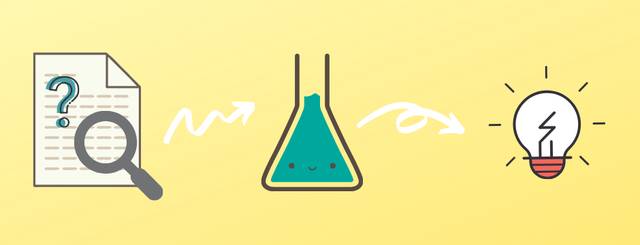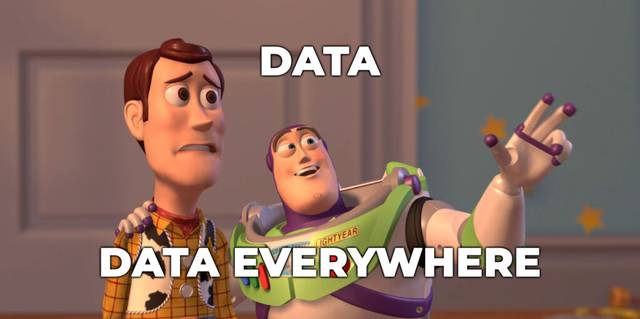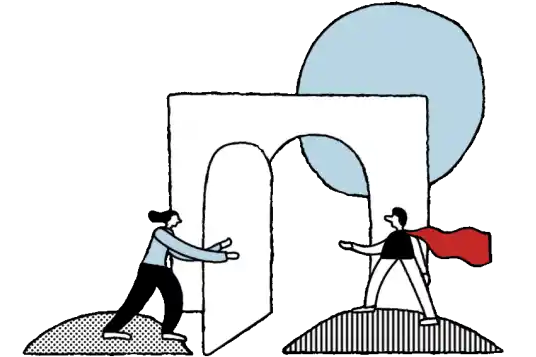
Ps. If you read all the way to the end we will reveal what the HEAT abbreviation stands for as well as drop you a free template to use!
What is a HEAT meet?
A HEAT meet is a hypothesis creation workshop format originally created by us, Sweden’s leading CRO agency Conversionista!. In a HEAT meet colleagues with different cross-functional roles meet to come up with hypotheses for one focus area with a specific goal or KPI.
The foundation is the collected data and research, based on which we form the hypotheses. HEAT meets are perfect to do on a regular basis and you can choose different focus areas each time.
The focus area can be big or small depending on your preference or what suits your company. With a bigger focus area, such as the Checkout of your E-commerce, you might need 2-3 hours for the workshop and it might be suitable to hold them quarterly.
If you instead go smaller and deep dive into for example a specific popup on your site, you can do it faster (30 minutes-1 hour) and more often (every sprint or every two weeks).

How do you prepare for the HEAT meet?
Once you’ve selected your focus area it’s time to do the most important part – gather the data. The research is central to the HEAT meet so make sure to spend enough time here. To get started you can create a learning plan with questions you wish to answer using different data sources. Useful ones include:
The preparation might often involve Data Analysts, UX Researchers and CRO Specialists.
An important part is to always try to triangulate the data, meaning strengthening a finding from multiple angles, using quantitative and qualitative data and heuristics or best practice. In the end, you only want to include your curated data, meaning the most meaningful and strongest findings, in your HEAT meet material.
During the research phase you might come across bugs or things that just do not make sense for the user – what we call a Just do it. Those you can fix immediately.
You might also come across new learnings that widens the scope a lot, which you might have to go into more detail into at a later stage – what we call Explore. Those could be great new focus areas for future HEAT meets.
That leaves the last of the three buckets, Experiment, something that requires testing to verify the effect of, which is what we want to focus on in the HEAT meet.
Why do we have HEAT meets?
To work with experimentation or A/B-testing in an organization we need hypotheses, the very foundation of experiments. The better rooted the hypothesis is in data and research, the better chances it has of being a winner.
Ideally we do not just want to brainstorm and spit out random ideas based on gut feel. Instead we want to identify a customer pain point or a customer need and try to fix it or meet it. With a HEAT meet you are making sure you are getting just that!
By doing this type of hypothesis workshop you can not only build up your A/B-test backlog but also make people in your organization go from data-curious to data-driven and become more involved in the CRO process.

Who should be in a HEAT meet?
When inviting colleagues to the HEAT meet, consider getting as wide a variety of roles as possible. Around 5-15 people is usually a good amount. If there’s a Product Owner for the focus area, that person would naturally be invited but don’t forget the developer that might have a completely different, and very important, view.
It can also be very valuable to invite someone who is not familiar with the focus area at all. This person might be less aware of obstacles, think more freely and give you another great angle.
A HEAT meet step by step
So the time has finally come for the meeting! What to do? We’ll take it step by step.
Step 1. Intro
Introduce yourself and the agenda. Have a quick presentation round of your names and roles to get to know each other.
Step 2. Data walk-through
Go through the collected research. If you’re presenting data, remember to show problems and not solutions at this stage, because we want our participants’ minds to be as free as possible. It can also be useful for the participants to have access to the material if they need to go back to a certain finding in the next step.
Step 3. Hypothesis generation
It’s now time for everyone to get involved! Take a few minutes all on your own to write down hypotheses (preferably using the IAR formula – our free generator can be found here) and then a few minutes to go round the table sharing with the group.
Step 4. Solution sketching
At this stage it’s time to draw. And don’t worry, it’s not an art competition 😉 Use pen and paper, Paint, FIGMA or whatever you feel comfortable with and draw how a solution to the hypothesis could look. Feel free to merge more than one hypothesis into one drawing or to draw multiple. Here again a few minutes of sketching on your own, and then a few to share with the group.
What happens after the HEAT meet?
As soon as possible after the HEAT meet it’s good to meet in a smaller group (the most involved in setting up the HEAT meet) to collect all hypotheses and sketches and make the prioritization.
In order to do this you will probably need to process the output of the meeting. These are the type of actions that might lead you to a concrete list of test candidates:
When you have a clearer list you can move on to prioritization, for example using a prioritization framework such as PIE (Potential, Impact, Ease). This will then help you decide which experiment to start with.
So what does HEAT meet stand for?
Congrats, you made it to the end! When interviewing fellow Conversionistas there seems to be multiple different meanings of the abbreviation HEAT. But in the end most agreed on Hypothesis Exploration And Triangulation. So I’ll leave you with that and of course the free downloadable template. Good luck on your next HEAT meet!
Download template HERE
Need help setting up a HEAT meet where you work?
Contact us today 👇👇👇
Ready to accelerate your digital growth? Add your details here or email us at hej[a]conversionista.se and we’ll get back to you.
